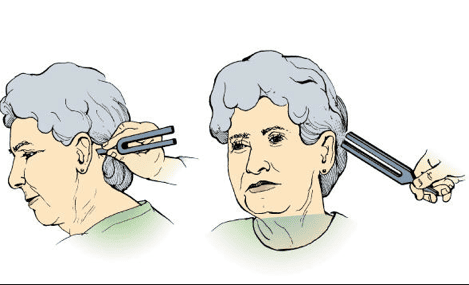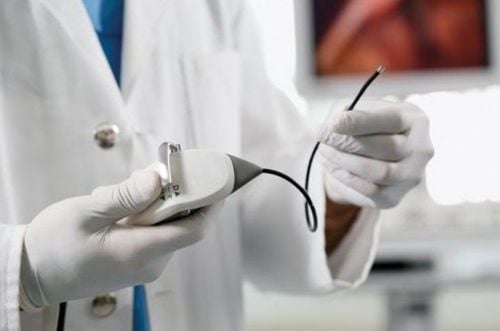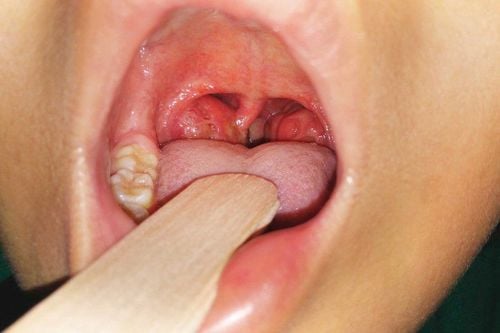This is an automatically translated article.
The article was professionally consulted by Specialist Doctor of Otolaryngology - Department of Medical Examination and Internal Medicine - Vinmec Hai Phong International Hospital. Doctor has more than 10 years of experience in examining and treating ENT diseases of adults and children.
Hearing is one of the five senses of the human body, an important part that helps to absorb sound by detecting vibrations through the inner ear. Once this part is damaged, it can cause severe deafness, solid deafness, or complete deafness. Audiometry is one of the most effective and safe methods of checking sound reception.
1. Learn about the auditory apparatus
Hearing varies from person to person. To assess hearing status, doctors often take the average audiometric index of people without ENT disease as the standard.
According to specialists, the human voice is in the most sensitive area of the hearing field, in the frequency range of 250 - 4,000 Hz. In terms of pitch, normal voice will be in the range of 30 - 70 dB. Therefore, when there are hearing impairments in the speech region, more attention will be paid to the loss of hearing in other regions.
Usually, it is only when hearing loss is down to 30dB that it is noticed. There are also many cases of a 25 dB reduction, but they do not feel any difficulty in receiving the sound, until there is a health problem that causes the hearing loss to decrease by 5 dB, then they know they hear. least.
In the normal person, the parts of the hearing apparatus include:
Outer ear: It is the position of the auricle, responsible for receiving and guiding sound; Middle ear: Consists of the tympanic cavity, the ossicles, and its appendages. The middle ear is responsible for transmitting sound and converting sound energy to compensate for the loss in the posterior part; Inner ear: Is a corti organ with sensory cells and auditory nerves, performing the task of receiving sound and transmitting it to the brain through 5 neuronal stages.

2. What is audiometry?
Along with the development of society, modern scientific disciplines have also made great progress in diagnosing medical conditions in patients. In the field of otolaryngology, there are many modern machines invented to help doctors understand thoroughly about the path of hearing and diagnose hearing-related diseases accurately. corpse.
Audiometry is simply understood as presenting a chart illustrating a person's hearing ability and the degree of hearing loss (if any) in each ear. The audiogram will range from 125 to 8000 Hz.
To measure hearing, the doctor will play a sound with a frequency suitable for each person at the same time. The smallest sound that the tester can hear at each different frequency will be marked on the audiogram along with the intensity.
3. Why is audiometric necessary?
According to statistics, 3 out of every 1000 babies born will have hearing problems and have mild or severe hearing loss. Therefore, instead of spending a lot of time waiting, guessing and doubting about the child's hearing ability, taking the child to specialized medical facilities for audiometry will help bring faster and more accurate results. more precise.
On the other hand, hearing loss, hearing loss not only affects the ability to perceive sounds, but also can lead to speech delay and language development delay. Early intervention and detection are the best ways to keep your hearing healthy.
Parents should take their child for an audiometric test in the following cases:
The child does not respond to calls or loud noises; No babbling or trying to imitate sounds; Your baby is 12 months old and still can't understand simple phrases; Unable to locate where the sound was coming from; Do not imitate voices or use simple words; The sound of the TV cannot be heard at a normal level; Talking too loudly; Often watches TV and listens to music at unusually high volumes; The child is slow to speak, does not speak clearly. Not only for children but even adults, if they feel hearing loss, often can't hear calls or surrounding noises, hearing tests and measurements are very necessary.
4. Audiometry procedure
Each part of the auditory apparatus has a specific task to help people perceive sound fully. The inner ear receives sound transmitted from the air environment, damage to this part can cause severe deafness, solid deafness, or even complete deafness. The middle ear is responsible for conducting sound, if the patient has damage to this part, it can cause conductive hearing loss, however, the hearing loss will not exceed 60 dB and this type of deafness curable, even with surgery.
In fact, there are many cases of patients with damage to both the middle and inner ear and cause mixed deafness (both conductive and receptive).
Audiometry process includes:
4.1 Subjective hearing measurement Doctors will measure hearing through speech, tuning fork and measuring with a hearing meter, specifically:
Voice measurement: Is a way the simplest and can immediately use the doctor's voice. With only a few simple and common sentences, it is done in a room or corridor with a length of at least 5m, quiet space. The doctor will first measure the patient's hearing with a whisper, if the patient has a clear hearing loss, he will continue to measure it with normal voice.
One thing to note when performing this method is that the patient must not look at the doctor's mouth, stand perpendicular and point the ear to be examined towards the doctor and the unexamined ear must be covered.
Measure by sample tone Usually, to measure audio, the doctor will use a sample tone 128 or 256 Hz. The airway can be measured (leave the 2 samples longitudinally in front of the outer ear, about 2cm away), or measure the bone line (lightly press the sample tone handle on the mastoid surface and calculate the time from typing the sample tone until no hearing). , in seconds). Simultaneously, use the methods such as: Weber's test, Schwabach's test, Rinner's test..
In case of patients with mixed deafness, the tuning fork 128, 256, 512, 1024, 2048, 4096 can be used.

Measuring with simple instruments In case the patient is a person with severe hearing loss or for young children, usually using relatively standardized pronunciation instruments such as drums, whistles, muzzles, bells... or simple machines that can play a few simple tones or sounds like the sound of a train, an animal, etc. at a certain intensity to see if it can be heard and reflected and reacted.
Use audiometer - audiometer (audiometer). In this method, sound will be emitted through the air or through the bone to each ear. It is imperative that the measurement be carried out in a soundproof chamber. When connecting threshold points of hearing at frequencies will form an audiogram, also known as an audiogram.
4.2 Objective audiometrie resistance or measurement of cochlear and auditory EEG. Based on the results of the hearing measurement or audiogram, the doctor can assess how much the patient's hearing ability is different from the normal level . On the other hand, audiometric results can determine whether the patient will have difficulty in what sound environments in daily life, need to use assistive devices such as hearing aids or not. Vinmec International General Hospital is applying monophonic audiometry and tympanometry in diagnosing hearing loss, sudden deafness and ear diseases. This technique has the following advantages:
Helps to assess the sensitivity and activity of the sub-chain; Check the patency of the tympanic tube, assess the status of the tympanic membrane; Determine the threshold of hearing and the degree of hearing loss, from which there will be treatment methods and selection of appropriate hearing aids to meet the hearing needs; The measurement is safe and painless, and can be used in situations where the patient is uncooperative, especially young children. The technique of monophonic audiometry and tympanometry at Vinmec is performed by a team of well-trained and experienced medical doctors, with a system of modern equipment to help improve diagnostic efficiency. For detailed information on audiometric technology at Vinmec, please go directly to Vinmec medical system or register for an online examination on the website.
Please dial HOTLINE for more information or register for an appointment HERE. Download MyVinmec app to make appointments faster and to manage your bookings easily.













